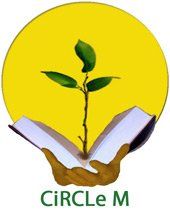Finding Paradise: In This World or The Next – Joyce Sasse
(Lenten Musings gives opportunity for Christians to reflect on basic understandings about how our Faith evolved.)
From earliest of times, the Hebrew people looked back expectantly to see who would re-open the gates to the Garden of Eden. Their paradise garden was almost within reach. Their stories and songs were filled with images of one day re-entering the place of safety and abundance.
This expectation focused on a messiah-like person. Finally one did come who talked about fulfilling old promises, being baptised into a new realm of love, offering hope and healing to those in despair.
The paradise garden in Christian scripture is connected with Easter. When the despairing followers of Jesus went to the Garden Tomb to ask “Where is (his body)?”, the reply was “Why seek ye the living among the dead? He is not here!”
Was it He who opened the gate to Paradise for-ever-after? When the faith-filled gathered to worship and share fellowship, they surrounded themselves with images of The Garden – in the form of refreshment through water, flowers and greenery, sharing food and companionship and giving thank offerings that showed their respect.
Theological Professors Rita Brock and Rebecca Parker tell about their travels through the Ancient Middle Ease in their book “Saving Paradise”. Their research quest was to try to understand some of the beliefs and practises of Christian followers in the first one thousand years after Jesus’ death.
They studied the art found in the tombs and churches of the time (including many churches now converted to mosques). What they saw depicted on the walls and ceilings were garden-related images: lush trees and flowers, waterways teeming with fish, a cosmos of stars and clouds of witnesses. When the Muslim worshippers moved into the former churches, they did little to change the old décor – for they, too, were a desert people who found kinship with paradise gardens.
What Brock and Parker didn’t find was also of interest. They didn’t find any crosses, nor any references to the death of Christ. They heard the echo “Why look for the living among the dead?” Their conclusion was “the possibility that Christians did not focus on the death of Jesus for a thousand years…”
For them “this world (was) permeated and blessed by the Spirit of God”. Baptism in the Spirit meant that believers were now welcomed into paradise, which included the entire cosmos … and all “the departed saints rested from their earthly labours and returned to visit those who loved them.”
To this day a closer look at art within Orthodox Christianity might better help us understand what that first millennium was like for Christian believers. How and when did the Western Church become so wrapped up with suffering, passion crucifixion and death stories – so much a part of our traditional Lenten practices? (the story will continue)
